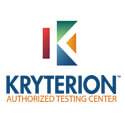Implementing Cisco Cybersecurity Operations (SECOPS 210-255)
About This Course
Implementing Cisco Cybersecurity Operations (SECOPS) v1.0 certification training allows the professionals to learn how SOC or Security Operations Center works and introductory knowledge and expertise required in this domain.
Professionals get to learn and develop core expertise required in grasping associate level coursework in the 210-255 SECOPS exam and which when combined with the 210-250 SECFND exam drives you to CCNA Cyber Ops certification.
Implementing Cisco Cybersecurity Operations (SECOPS) v1.0 certification program focuses on introductory level knowledge and expertise required for a Security Operations Center (SOC) analyst at associate level. The course helps you understand and identify basic threat analysis, malicious activity identification, event correlation and teaches you to use playbook for the purpose of incident response.
Who Should Attend This Course
Implementing Cisco Cybersecurity Operations (SECOPS) v1.0 certification program is apt for SOC security analysts, computer network defense support professionals, network defense experts/analysts, SOC personnel and future incident response experts.
The course is also apt for professionals and students who wish to kick-start a career in the field of cybersecurity. It is a perfect pick me up for IT professionals looking to understand and learn more about Cisco channel partners and cybersecurity operations.
Why This Course
CISCO SYSTEMS INC., is undoubtedly an industry leader in the networking landscape. Cisco powers a number of service providers from small to big scale organizations including corporations, educational institutions and federal agencies. A whopping 85% of the planet’s Internet traffic travels across Cisco’s systems. This triggers a huge demand for Cisco certified professionals to serve the growing IT domain and having a Cisco certification is sure to make you stand out from the crowd.
- Prepares you for 210-255 SECOPS exam
- Define SOC and various job roles in this domain
- Understand various SOC systems and infrastructure tools
- Understand and learn incident analysis fundamentals for threat oriented SOC
- Explore resources for assisting with investigation
- Explain event correlation
- Describe attack vectors
- Identify various malicious activities
- Learn about playbook concepts
- Explain and describe incident response
- Define SOC metrics and types
- Understand SOC automation and workflow management
Course Objectives
- Prepares you for 210-255 SECOPS exam
- Define SOC
- Understand SOC systems
- Understand incident analysis fundamentals
- Event correlation
- Attack vectors
- Identify malicious activities
- Learn playbook concepts
- Describe incident response
- Define SOC metrics
- SOC workflow management
Course Prerequisites
It is recommended for professionals to possess skills and knowledge equivalent to Interconnecting Cisco Networking Devices (ICND1). Professionals should even have basic understanding of Cisco IOS networking and Windows OS. Plus, Understanding Cisco Cybersecurity Fundamentals (SECFND) is a bonus.
Course Benefits
After successful completion of the course, you can:
- Prepares you for 210-255 SECOPS exam
- Define SOC and various job roles in this domain
- Understand various SOC systems and infrastructure tools
- Understand and learn incident analysis fundamentals for threat oriented SOC
- Explore resources for assisting with investigation
- Explain event correlation
- Describe attack vectors
- Identify various malicious activities
- Learn about playbook concepts
- Explain and describe incident response
- Define SOC metrics and types
- Understand SOC automation and workflow management





























